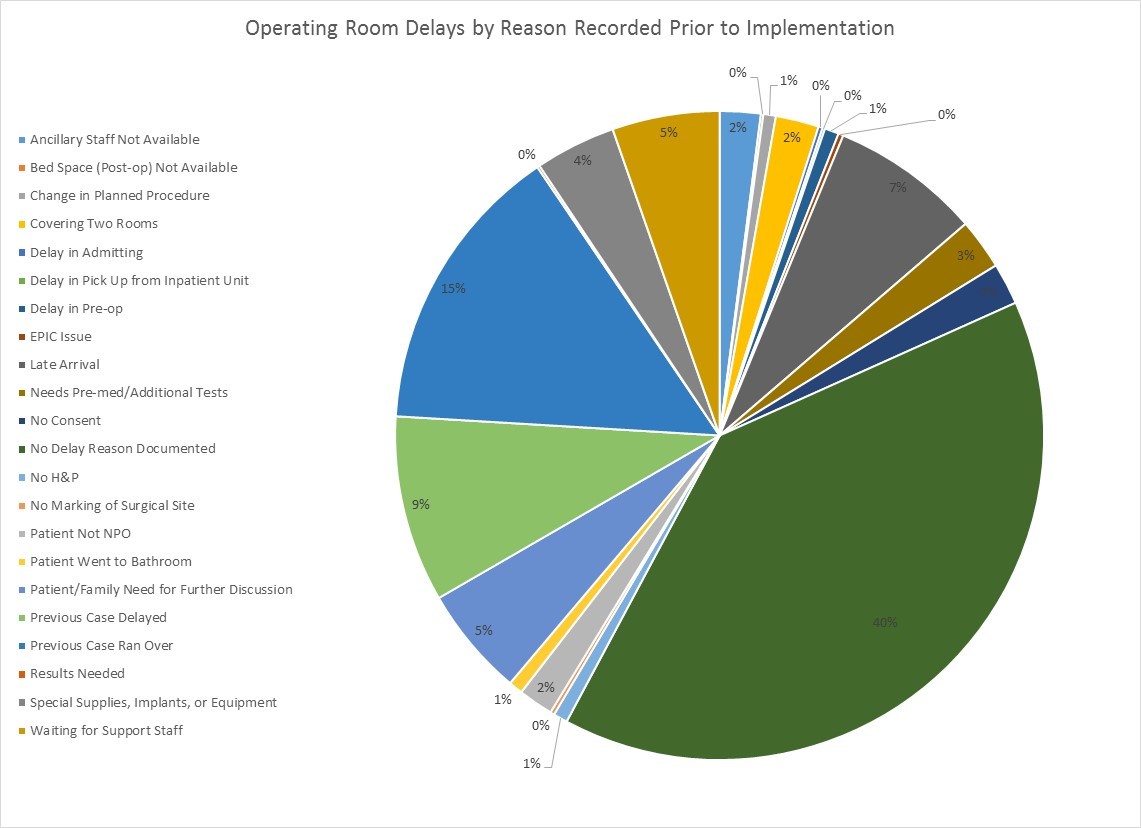NM-276
Targeting Systemic Errors in Electronic Medical Records to Increase Data Analysis Utilization: A Mission to Decrease Operating Room Delays
Little P, Chen K, Lobaugh L
Texas Children's Hospital/Baylor College of Medicine, Houston, Texas, USA
Introduction: Electronic medical records (EMR) have become commonplace for most operating rooms in the United States. EMRs allow for large amounts of data to be collected and analyzed. However, this technology can present with problems in accessibility and utilization of usable data. In an attempt to decrease procedure delays in an ambulatory center of a large tertiary children’s hospital, a quality improvement (QI) project was initiated only to be terminated due to unusable data as retrieved through the EMR. This setback redirected focus to a different objective that could open the door to future QI projects, having the potential to improve perioperative efficiency and performance. The new goal aims to decrease the amount of unusable/inaccurate data that was recorded into the EMR. Methods: The data entry process for delay reasons into the EMR at the outpatient surgery center was investigated through multidisciplinary collaboration of the hospital. The EMR entry system was reprogrammed, followed by education provided to nursing and physician staff. Reasons for delay were reviewed for a six-month period pre-intervention. The percentage of unusable data post-reprogramming was compared to the pre-reprogrammed results. Results: Before implementation of the EMR systematic change and education, “no delay reason†accounted for 40% of the total delay reasons (figure attached). Results after implementation are still being collected at this time, however preliminary review shows promising improvements. Discussion: With access to proper documentation of delay reasoning in the perioperative setting, large amounts of data can be collected and reviewed more efficiently. This would allow the possibility of future QI projects targeted at understanding and eliminating the inefficiencies and barriers resulting in procedure delays. Decreasing just one, 30-minute delay in an operating room can result in higher patient/parent satisfaction, financial gains on average of $3,000, and more efficient use of providers and staffing. Conclusion: EMRs can be an invaluable tool for data collection, analysis and implementation of change through QI projects, however, these steps require proper programming, improved user interface, and proper education for utilization of the EMR.
1. Murphy, Kyle (2017) Improving Clinical Data Integrity through HER Documentation: Quality HER documentation can support improvements to patient outcomes when done right. EHR Intelligcence. Retrieved November 4, 2017, from http://ehrintelligence.com
2. Kitty S. Chan, Jinnet B. Fowles, Jonathan P. Weiner. Review: Electronic Health Records and the Reliability and Validity of Quality Measures: A Review of the Literature. Medical Care Research and Review. 2010; v67, i5:503-527.
3. Roth, C.P, Lim, Y., Pevnick, J.M., Asch, S.M., McGlynn. E.A. The Challenge of Measuring Quality of Care From the Electronic Health Record. American Journal of Medical Quality.2009; v24,i5:385-394.
Top












